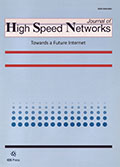Authors: Enokido, Tomoya | Duolikun, Dilawaer | Takizawa, Makoto
Article Type:
Research Article
Abstract:
In current information systems, a huge number of IoT (Internet of Things) devices are interconnected with various kinds of networks like WiFi and 5G networks. A large volume of data is gathered into servers from a huge number of IoT devices and is manipulated to provide application services. Gathered data is encapsulated along with methods to manipulate the data as an object like a database system. In object-based systems, each application is composed of multiple objects. In addition, each object is replicated on multiple physical servers in order to increase availability, reliability, and performance of an application service. On the
…other hand, replicas of each object is required to be mutually consistent in presence of multiple transactions. Here, a larger amount of electric energy and computation resources are consumed in physical servers than non-replication approaches to serialize conflicting transactions on multiple replicas. Many algorithms to synchronize conflicting transactions are so far proposed like 2PL (Two-Phase Locking) and TO (Timestamp Ordering). However, the electric energy consumption is not considered. In this paper, an EEQBL-OMM (Energy-Efficient Quorum-Based Locking with Omitting Meaningless Method) protocol is newly proposed to reduce not only the average execution time of each transaction but also the total electric energy consumption of servers by omitting the execution of meaningless methods on replicas of each object. Evaluation results show the total electric energy consumption of servers, the average execution time of each transaction, and the number of aborted instances of transactions in the EEQBL-OMM protocol can be on average reduced to 79%, 62%, and 80% of the ECLBQS (Energy Consumption Laxity-Based Quorum Selection) protocol which is proposed in our previous studies in a homogeneous set of servers, respectively. In addition, the evaluation results show the total electric energy consumption of servers, the average execution time of each transaction, and the number of aborted instances of transactions in the EEQBL-OMM protocol can be on average reduced to 73%, 50%, and 67% of the ECLBQS protocol in a heterogeneous set of servers, respectively. The evaluation results also show at most 48% and 51% of the total number of methods can be omitted as meaningless methods in a homogeneous set and heterogeneous set of servers, respectively, in the EEQBL-OMM protocol.
Show more
Keywords: Distributed object-based systems, locking protocols, meaningless methods, green computing, EEQBL-OMM protocol
DOI: 10.3233/JHS-220690
Citation: Journal of High Speed Networks,
vol. 28, no. 3, pp. 181-203, 2022
Price: EUR 27.50





